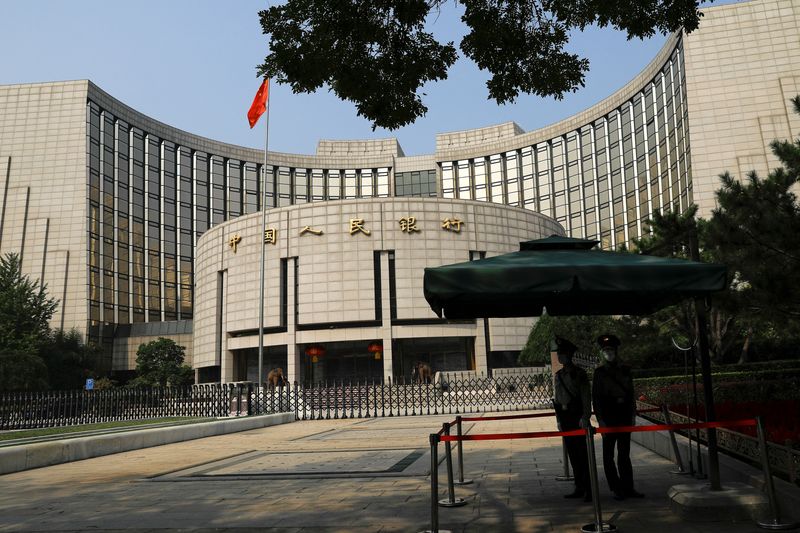China expected to leave lending benchmarks unchanged amid rate risks
2024.12.19 01:54
SHANGHAI (Reuters) – China is widely expected to leave its benchmark lending rates unchanged on Friday, a Reuters poll showed, as falling yields, shrinking net interest margins and a weakening yuan create limits for immediate monetary easing.
Yield differentials between China and the U.S. hit their widest in 22 years this week, dragging the yuan to its weakest in over a year, despite a Federal Reserve interest rate cut.
While rapid declines in Chinese yields have prompted the central bank to warn against rate risks, a pledge by the Politburo to switch to an “appropriately loose” monetary policy stance next year has heightened market expectations for more easing in coming months.
The loan prime rate (LPR), normally charged to banks’ best clients, is calculated each month after 20 designated commercial banks submit proposed rates to the People’s Bank of China (PBOC).
In a Reuters survey of 27 market watchers conducted this week, all respondents expected both the one-year and five-year LPRs to remain steady.
“The central bank has just warned (against interest rate risk), it seems a bit inappropriate to cut interest rates right after that,” said a trader at a Chinese bank.
China’s central bank on Wednesday urged financial institutions to guard against interest rate risks when trading in bonds, signalling discomfort over a recent buying frenzy that has helped drive yields sharply lower.
Earlier this month, the Politburo said China will adopt an “appropriately loose” monetary policy next year, the first easing of its stance in some 14 years, alongside a more proactive fiscal policy to spur economic growth.
“Before end-2025, amid slowing growth and contained inflation, we expect the PBOC to deliver one round of 15-basis-point cuts to the 7-day reverse repo rate, the one-year LPR and the five-year LPR in Q1 and another round of 15bp cuts in Q2,” economists at Nomura said in a note.

They added that they also expect a 50-basis-point reserve requirement ratio (RRR) cut before the end of this year, followed by two more cuts by the same size next year.
In October, Chinese lenders slashed lending benchmarks by bigger-than-expected margins to revive economic activity.








